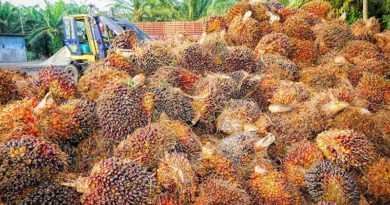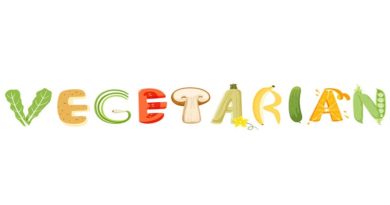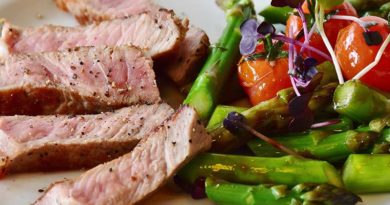Avocado diet ‘triples chance of success’ for couples undergoing IVF
So announced the media headline on 4th July.
The study was presented at the European Society of Human Reproduction and Embryology in Istanbul. It was carried out at the Harvard School of Public Health and was funded by the US National Institutes of Health.
Study leader Professor Jorge Chavarro said: “The best kinds of food to eat are avocados, which have a lot of monounsaturated fat and low levels of other sorts of fat, and olive oil.”
The study
This is the press release from the conference.
This is the abstract for the study.
Study: The study involved only 147 women having IVF at the Massachusetts General Hospital Fertility Center. These women collectively underwent 198 ART (Assisted Reproductive Technology) cycles. As the study leader admitted – this is a small study.
Method: The intake of different dietary fats was recorded for the women and the outcome of fertility treatment compared between the highest and lowest third of fat intake in each category.
This sentence from the abstract is key: “We used 2 different sets of carbohydrate substitution models that included additional terms for all other sources of energy, except for carbohydrates.” What does this mean? There are only 3 sources of energy – carbohydrate, fat and protein. Does this mean that fat and protein have in some way been matched and not carbohydrates?
Results: I’ve taken this from the abstract for the study’s own words: “higher intakes of total fat and saturated fat were related to fewer metaphase 2 (M2) oocytes retrieved.” i.e. Women with the highest levels of all total fat and saturated fat had fewer good eggs available for use in treatment.
“Polyunsaturated fat consumption was inversely related to embryo quality” i.e. higher levels of polyunsaturated fat consumption were related to poorer quality embryos.
“Higher intakes of monounsaturated fat were related to higher odds of live birth. The odds ratio of a live birth among women with the highest intake of mono-unsaturated fat was 3.45 when compared to women with the lowest intake.” i.e. higher intakes of mono-unsaturated fat were associated with a 3.4 times higher live birth rate than those with the lowest intake.
So, to summarise, the claims are:
Higher total fat intake = fewer good eggs;
Higher saturated fat intake = fewer good eggs;
High polyunsaturated fat intake = poor quality embryos;
High monounsaturated fat intake = 3.4x higher live birth rate (please note that the live birth rate can be very small and 3.4 times this can also be very small).
Nutritional facts
Food is made up of water (no calories), fat, protein and carbohydrate.
Any food that contains fat contains all three fats: saturated, monounsaturated and polyunsaturated. There are no exceptions.
Without knowing what the study has done to allow for carbohydrate, let us look at just their conclusions and put these in the context of nutritional facts…
Study leader Professor Jorge Chavarro said: “The best kinds of food to eat are avocados, which have a lot of monounsaturated fat and low levels of other sorts of fat, and olive oil.”
The Daily Mail advises: “A study found monounsaturated fat – found in olive oil, sunflower oil, nuts and seeds – was better than any other kind of dietary fat for would-be mothers. In contrast, women who ate mostly saturated fat, found in butter and red meat, produced fewer good eggs for use in fertility treatment.”
This is important to include because c. five million people likely read the Daily Mail and probably a few hundred read the study extract. Far more people may consequently believe that sunflower oil, nuts and seeds are high in monounsaturated fat – which they are, but they can be even higher in polyunsaturated fat. The majority of people (thanks to the ignorance of the media) already think that red meat is “full of saturated fat”. Red meat is mainly water, then protein, then unsaturated fat – saturated fat literally is the last thing that red meat is. Butter is a rare food in that is it higher in saturated than unsaturated fat. It is still anything but bad for us. Butter is rich in vital fat soluble vitamins and infinitely better than hydrogenated, emulsified, bleached and deodorised man-made spreads and margarines. We also eat approximately 39g of butter per person per week in the UK[i] so I don’t think we should lose any sleep over butter.
In the following table I have compared foods mentioned by the study leader and a number mentioned in the Daily Mail article – all per 100g of product – for total and type of fat content.
|
All per 100g |
Total fat |
Saturated |
Mono |
Poly |
|
Avocado[ii] |
14.7 |
2.1 |
9.8 |
1.8 |
|
Sirloin steak[iii] |
7.1 |
2.1 |
3.0 |
0.3 |
|
Pork chop[iv] |
4.2 |
1.5 |
1.8 |
0.5 |
|
Olive oil[v] |
100 |
13.8 |
73 |
10.5 |
|
Sunflower oil[vi] |
100 |
10.3 |
19.5 |
65.7 |
|
Mixed nuts[vii] |
51.4 |
6.9 |
31.4 |
10.8 |
|
Flaxseeds/linseeds[viii] |
42.2 |
3.7 |
7.5 |
28.7 |
|
Butter[ix] |
81.1 |
51.4 |
21 |
3 |
Please note that the individual fats rarely add up to the total fat number in the USDA database. It is not possible to be completely accurate when analysing food composition.
Remember the claims:
Higher total fat intake = fewer good eggs. This means that the best foods in the above table are pork and steak – red meat. The worst foods are olive oil and sunflower oil – the former recommended by the study leader.
Higher saturated fat intake = fewer good eggs. This means that the best food in the above table is the pork chop; steak and avocado are equal second. The worst foods are olive oil and butter – the former recommended by the study leader.
High polyunsaturated fat intake = poor quality embryos. This means that the best foods in the above table are pork and steak – red meat. The worst foods are sunflower oil and seeds (note Daily Mail). However, note study author, olive oil has 35 times the polyunsaturated fat of sirloin steak.
High monounsaturated fat intake = 3.4x higher live birth rate. The best food for monounsaturated fat is olive oil in the above table – but this is equal worst for total fat and multiples worse than red meat for polyunsaturated fat, so this cannot be recommended overall. (It also has over 9 times the saturated fat of the pork chop – not many people know that). The lowest amount of monounsaturated fat is found in the pork chop in the table above – pork can be so low in fat overall, it can’t be helped!
The avocado, the food that inspired the headline, is not the lowest in total fat or the lowest in saturated fat or the highest in monounsaturated fat or the lowest in polyunsaturated fat. We have no idea what this miraculous food (lowest in total fat, lowest in saturated fat, highest in monounsaturated fat and lowest in polyunsaturated fat) is supposed to be and clearly nor do the study leaders. (The pork chop is the closest we can find).
Please also remember that we know nothing about other macro nutrients in this study. Getting total fat and different types of fat from red meat, oily fish and eggs is incomparable to getting total fat and different types of fat from cakes, biscuits, pastries, crisps and so on. If women with the highest fat intake were consuming the most processed food (not unlikely), then this is a study measuring processed food, flour and sugar and not real fat in real food.
This focus on fat also ignores an equally, if not more important aspect of nutrition – micro nutrients. Oils, olive oil and sunflower oil, are pretty useless nutritionally with vitamins E and K and not much else. The pork and steak in the table are excellent providers of virtually all vitamins and minerals. Avocados, being relatively high in fat, are one of the more nutritious fruits, but still lack retinol, B12, D3, K2, heme iron and the nutrients exclusive to foods of animal origin. No credible study can recommend macro nutrient composition in isolation from micro nutrient content.
I was getting fed up with studies showing complete nutritional ignorance in their damnation of red meat and eulogies of fairly useless substances like olive oil. I am now beyond fed up – I’m angry.
There is no comparable desperation to a couple wanting a child and going through the agony of IVF to try to realise their dream. Telling women that they can “triple their chances of a live birth” by consuming monounsaturated fat, as if this can actually be consumed in isolation from the other fats that are alleged to lead to fewer good eggs and embryos of poorer quality, is outrageous. It is ignorance to the point of cruelty.
If you want to optimise your chance of conception through diet – eat real food and don’t eat processed food and don’t trust any claims from those who clearly don’t know what food is made of.
[i] DEFRA, Family Food Survey, (Table 1.1), (2008).
[ii] http://nutritiondata.self.com/facts/fruits-and-fruit-juices/1843/2
[iii] http://nutritiondata.self.com/facts/beef-products/7493/0
[iv] http://nutritiondata.self.com/facts/pork-products/10298/0
[v] http://nutritiondata.self.com/facts/pork-products/10298/0
[vi] http://nutritiondata.self.com/facts/fats-and-oils/572/2
[vii] http://nutritiondata.self.com/facts/nut-and-seed-products/3125/0
[viii] http://nutritiondata.self.com/facts/nut-and-seed-products/3163/2
[ix] http://nutritiondata.self.com/facts/dairy-and-egg-products/133/2




Pingback: Do fertility foods like pineapple and pomegranate actually work?
Very helpful article Zoe. I’m passing on to a friend going through IVF right now.
You are erroneously comparing 100g of olive oil to 100g of steak and pork chops. 100g of olive oil is 6-7 Tbsp; that’s a ton of olive oil. 100g of steak is a couple of bites. So, yes, steak can be bad because someone will eat 300g at once, while olive oil is good, because someone might eat 14g in a meal. You need some fat in your diet. Get it from olive oil, not steak.
Zoe, first off I’ve just recently found this blog and have been loving reading it. I’ve been learning a lot from you! The only thing so far that seems to bother me is the Pork Vs. Olive Oil point that you make often.
I totally understand the underlying point. Eating pork is no less healthy than eating olive oil. They both contain all three fats, so to claim one is “better” than the other is irresponsible. Fats are good!
Where I have a slight problem is with the way that you get this point across. By simply taking the default serving sizes of the USDA (100g) you are tipping the scales and being sneaky in order to drive home the point.
100g of Olive Oil is about 7 Tbsp. I eat 2 cups of salad a day and to cover it generously (in order to be tasty and full of fat for my ketogenic diet) I need 3 Tbsp of Olive Oil and 1 Tbsp of Balsamic Vinegar. That seems to really saturate the salad. 7 Tbsp of Olive Oil is just downright gross to consider a “serving” in the same respect that 100g of Pork. I can’t imagine anyone eating that much oil at one sitting (typically what “serving” implies).
In 100g of Pork, as per your source, there is 4.2g of Total Fat. In a typical (1) serving of Olive Oil – 14g – there is obviously 14 g of total fat. When you break down the individual fats in each. Pork still wins at having less Saturated fat and Less PUSF. Of course Olive Oil wins for having more MUSF. This still gets your point across, though I understand why it doesn’t work as well as the 100g vs. 100g way you’ve been doing which I hope you would admit IS misleading. I’d even let you slide with 42g of Olive Oil (my typical (3) serving size for my salad). Which would drive home your point even further, still without being misleading.
Break it down even further and compare 4g of Olive Oil to the 4g in a Pork Chop and this is where your point begins to fall apart as now the Pork has more Saturated Fat, still less MUSF, and equal PUSF. HOWEVER, this is almost as unrealistic as the 100g Vs. 100g model because 4g of Olive Oil wouldn’t cover a single spinach leaf!
I’m not trying to play “investigative journalist” and bust you. Once I read this fact on your knowledge page I have been regurgitating it to everyone who crosses my path! Just for my own sake I needed to know how accurate this fact was so I did some personal research. And I’m bringing it up to you so you can clarify and hopefully agree that I am at least making sense. Or, if I’m missing something, you can tell me so I learn something new, which is always a great thing!
Thanks!
Hi Brian – when comparing a number of foods – as this article does – the fairest way is to compare equivalent weights of product – i.e. 100g to keep the maths simple. We don’t eat 100g of butter in a fortnight so the same argument applies to the more demonised food!
I’ve had this argument before – we don’t eat 100g of olive oil so I’ve started using this comment in radio interviews: “There’s more saturated fat in a table spoon of olive oil than in a 100g pork chop – and more than three times the fat in total.” I agree with you this is a more powerful and realistic point but I need to have a consistent basis if comparing a number of foods.
Smart people like you know that fat isn’t a problem anyway so this is more about reaching people on their own turf who think that olive oil is great and red meat is bad. They do not know the facts!
Keep spreading the words and thanks so much for your support
Best wishes – Zoe
Great article Zoe, always grateful to those who spend the time fact checking and share the results.